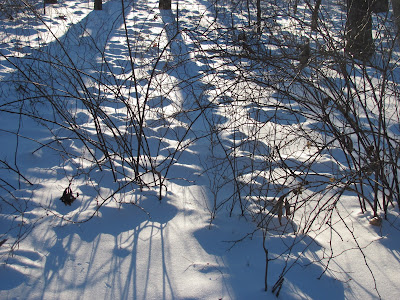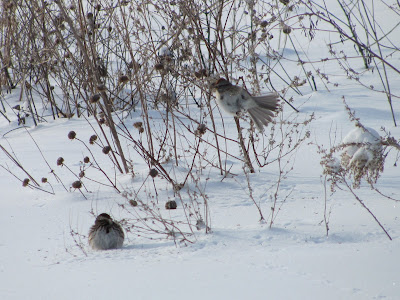drifts cover the gate,
redbirds first to the feeder,
woodpecker pecks first
Before dawn on the morning after the blizzard we open the door to the entry to discover that the outside door, not tightly closed, had blown open and the shoe rack is covered with snow. Outside, drifts almost completely cover the three-foot gate. When the sky begins to lighten, the redbirds are the first at the feeder. A downy woodpecker clings to the side of a shagbark hickory nearby, feathers fluffed, head turning constantly. After the cardinals have cleared the snow from a corner of the feeder, the woodpecker flies in, scaring off the other birds, picks up one black oil sunflower seed at a time, and flies back to the tree to peck it open. All the birds, including chickadees and titmice, take turns at the access hole, according to their pecking order. As soon as one bird flies away, another takes its place.








































